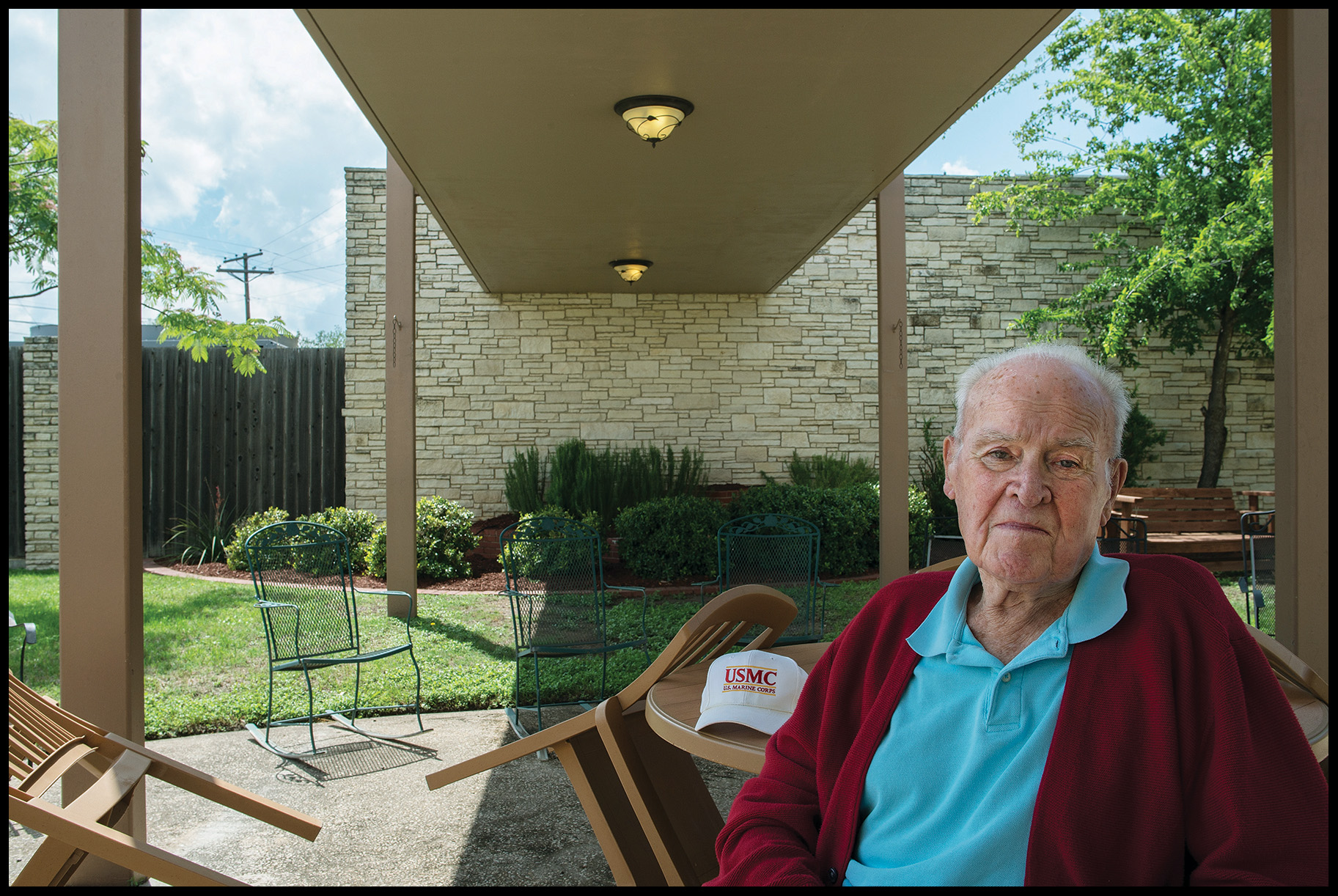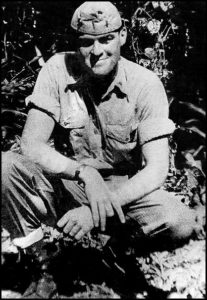
John H. Snellgrove
Battlefield Commission
Guadalcanal
John H. Snellgrove
Major, USMC
1942-1863

Lt. John Snellgrove,
Guadalcanal, 1942
I chose the Marine Corps. From what I had seen, the esprit de corps was remarkable. If someone was going to shoot at you, I wanted someone beside me that I knew was going to stick around.
Well, you have an old goat here. I made the original landing on Guadalcanal as a 19-year-old. I spent a total of 21 years in the Marines; 17 as a reserve. I was from Elgin IL, 40 miles west of Chicago, and I enlisted right after Pearl Harbor at a big enlistment in Chicago. We got on a troop train to San Diego, MCRD—July 10th, 1942.
I chose the Marine Corps. From what I had seen, the esprit de corps was remarkable. If someone was going to shoot at you, I wanted someone beside me that I knew was going to stick around. There’s no question the Marine Corps was the best. They really brainwash you in boot camp. That’s the only way to explain it; it was really tough. If you could make it, you could make anything.
July, 1942 was when we boarded ship. We did not know where we were going. What difference would it have made? Who ever heard of the Solomon Islands? We started by landing on Tulagi where all the fighting was—I mean real fighting.
August, 1942 I went to Guadalcanal where I received a battlefield commission. I was on there for seven months. Saw a lot of action. We were called off the supposed front lines to protect Henderson Field; we had a forced march to a great big palm tree near Henderson. They had some big guns back in the hills and they pinpointed us. The Japanese Navy then cut loose on us and began tearing things up. We didn’t have foxholes. It was chaos that night. We didn’t lose many men, though. It was never what you would call intense fighting on Guadalcanal, eyeball to eyeball; we did have some bayonet charges. Ours was more Cowboy and Indian type of fighting—hit and run, sneaky Pete.
The Japanese ships chased off supply ships and we didn’t have food for 30 days. All we had was what was in our packs. We had to forage for whatever we could get. I remember seeing a guy guarding some food with a Browning Automatic Rifle. We found a lot of the Japanese sand bags had meal in them, like an oatmeal. We could take the end off of a 75mm shell, swish the meal around in water and got the weevils out, then compressed the salt water out and made pancakes. Wasn’t the tastiest thing in the world, had salt in it, but it was filling. We had coconuts if you wanted to get diarrhea in a hurry.
After Guadalcanal we went into Russell Island, Eniwetok in the Marshall Islands, and my last landing was on Guam. I missed Iwo fortunately. Missed Tarawa also. I was not destined to die in that war.
My best day in the Corps was when I made 2nd lieutenant. As they say, I was busted from corporal to 2nd lieutenant. My worst day had to be when a mortar went off near me and blew me bonkers. I ended up in the hospital for 10 days.
Still very proud of the Marine Corps. My son went in the Marines. Pretty good day when I pinned his bars on. He went into OCS and after college he got his commission. He traveled several places in Europe before he went to Vietnam.
How do they take 17-year-olds and turn them into exceptional fighting forces? They chew your butt out if you sneeze. They are right in your face. The boot camps you see on the screen are a party. I was overseas for three years. I missed a few birthdays, a few Christmases. I was there for the duration. I married a Wave Navy gal afterwards. We used to fight a lot.
Got out and became an assistant purchasing agent for Elgin Softener Corp.—water conditioning. Took early retirement in 1955. Bought a 20-foot Airstream then drove the U.S. Dorothy and I were married for 50 years. {05-27-2014 • Kerrville, TX}